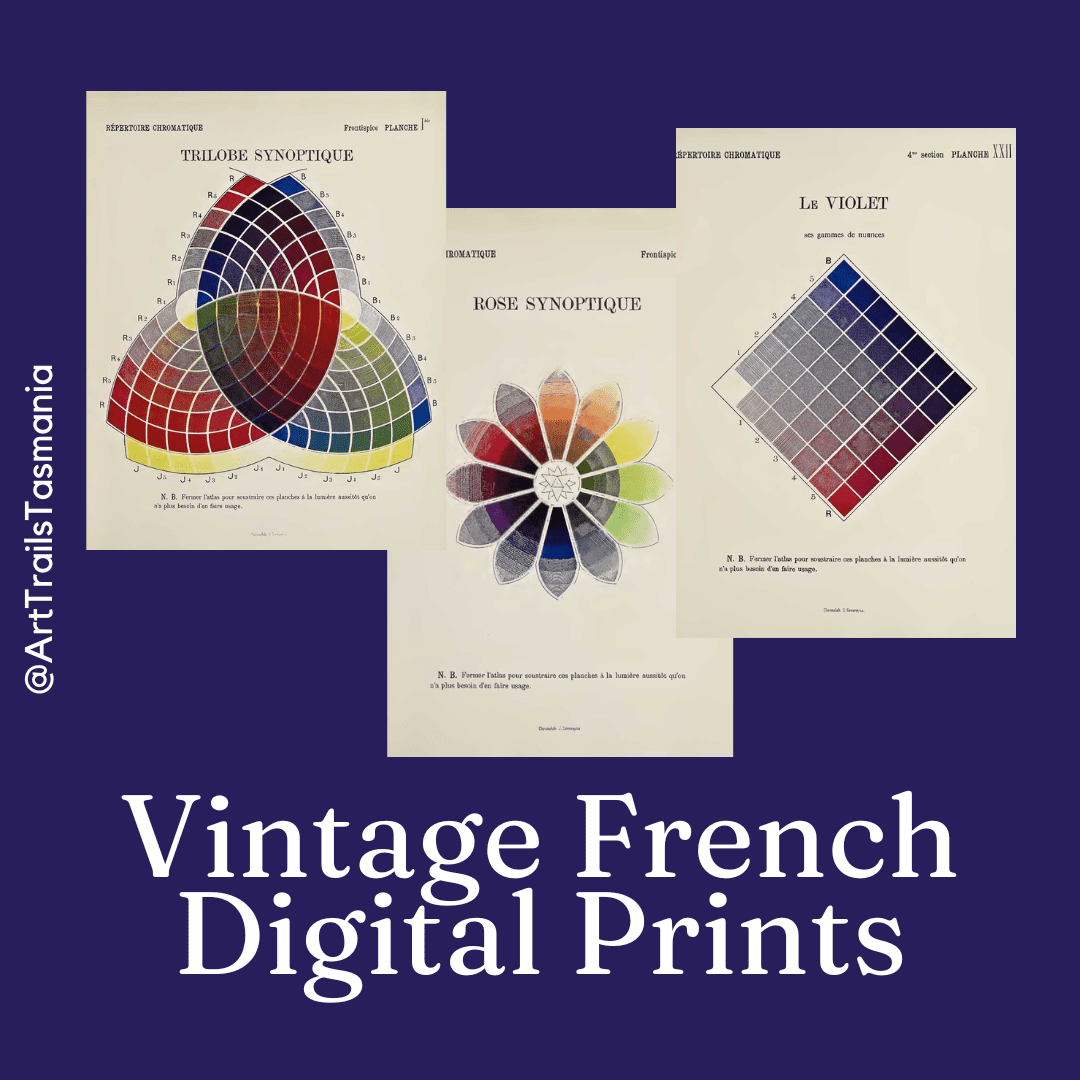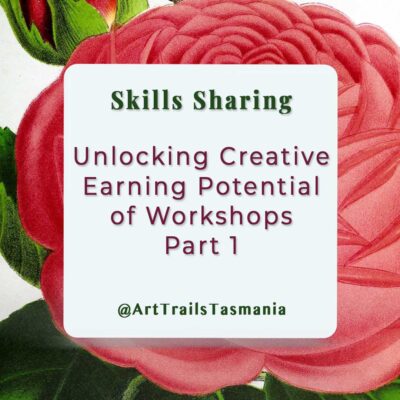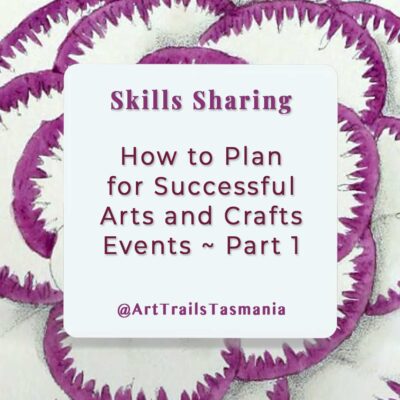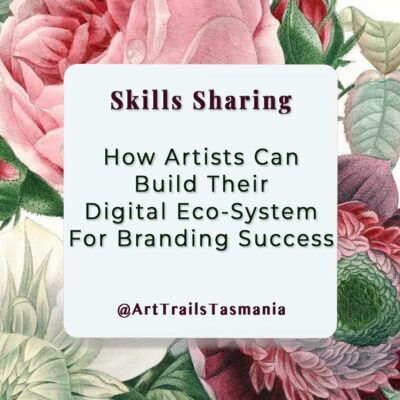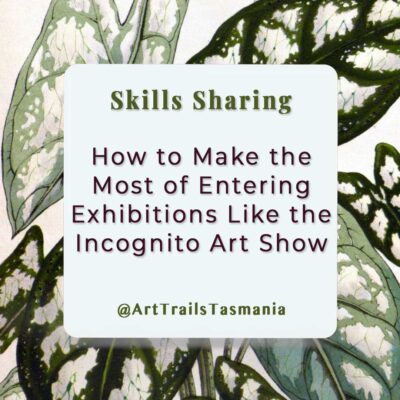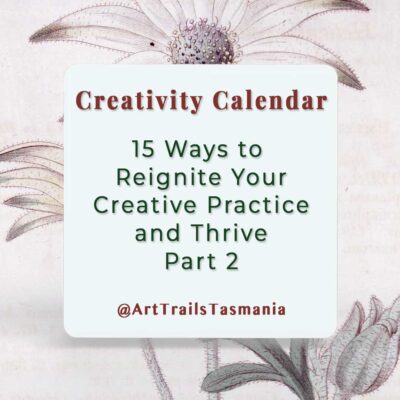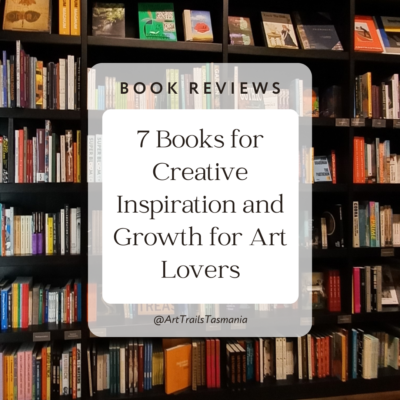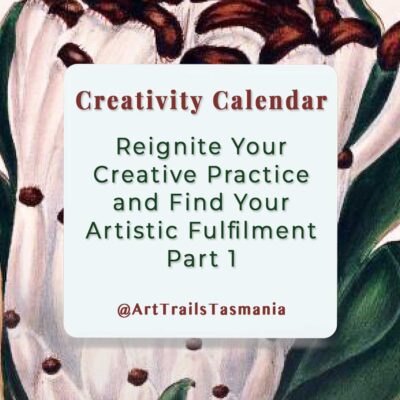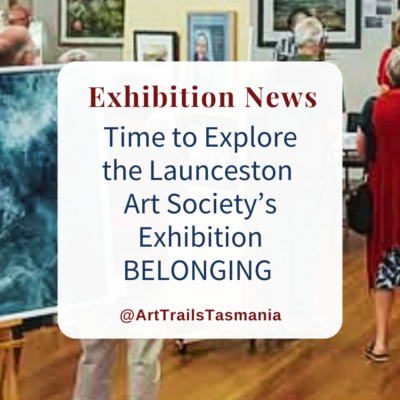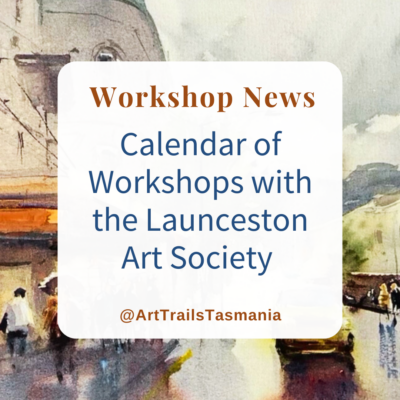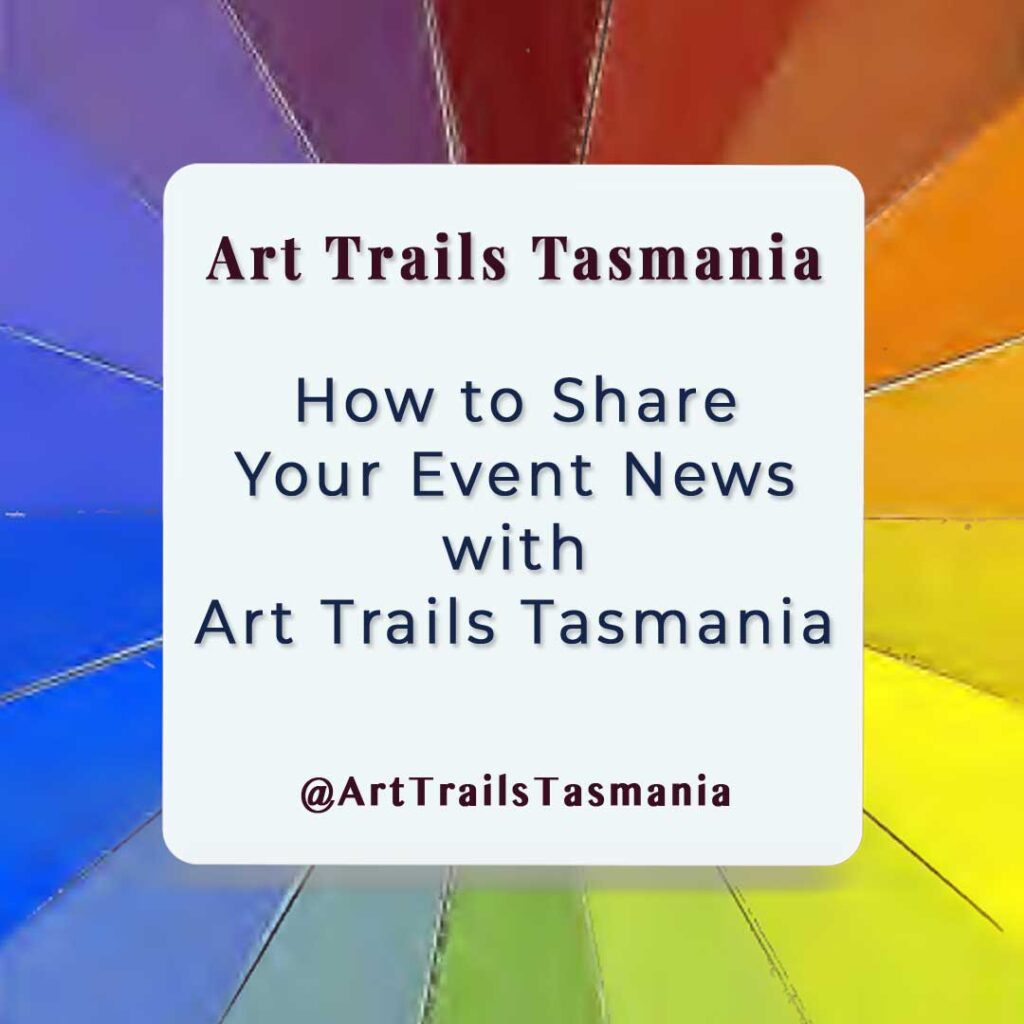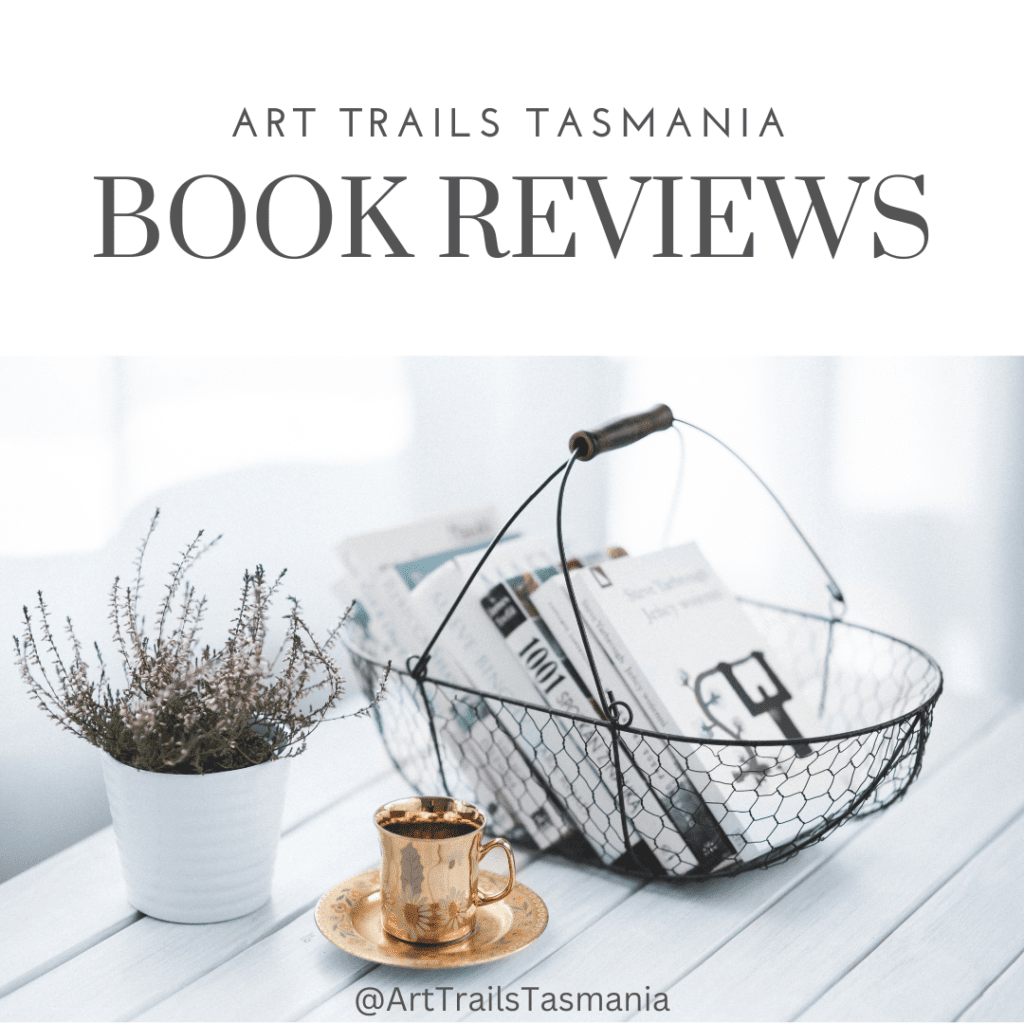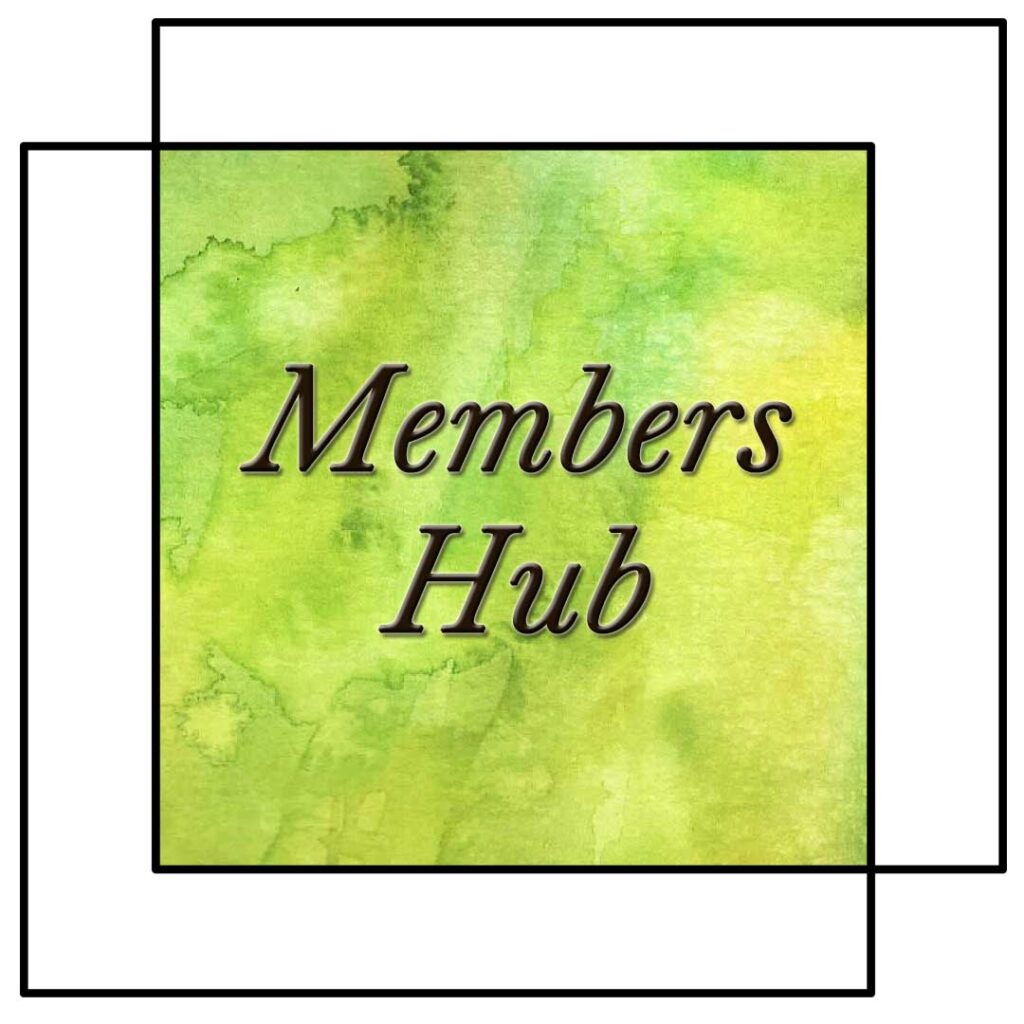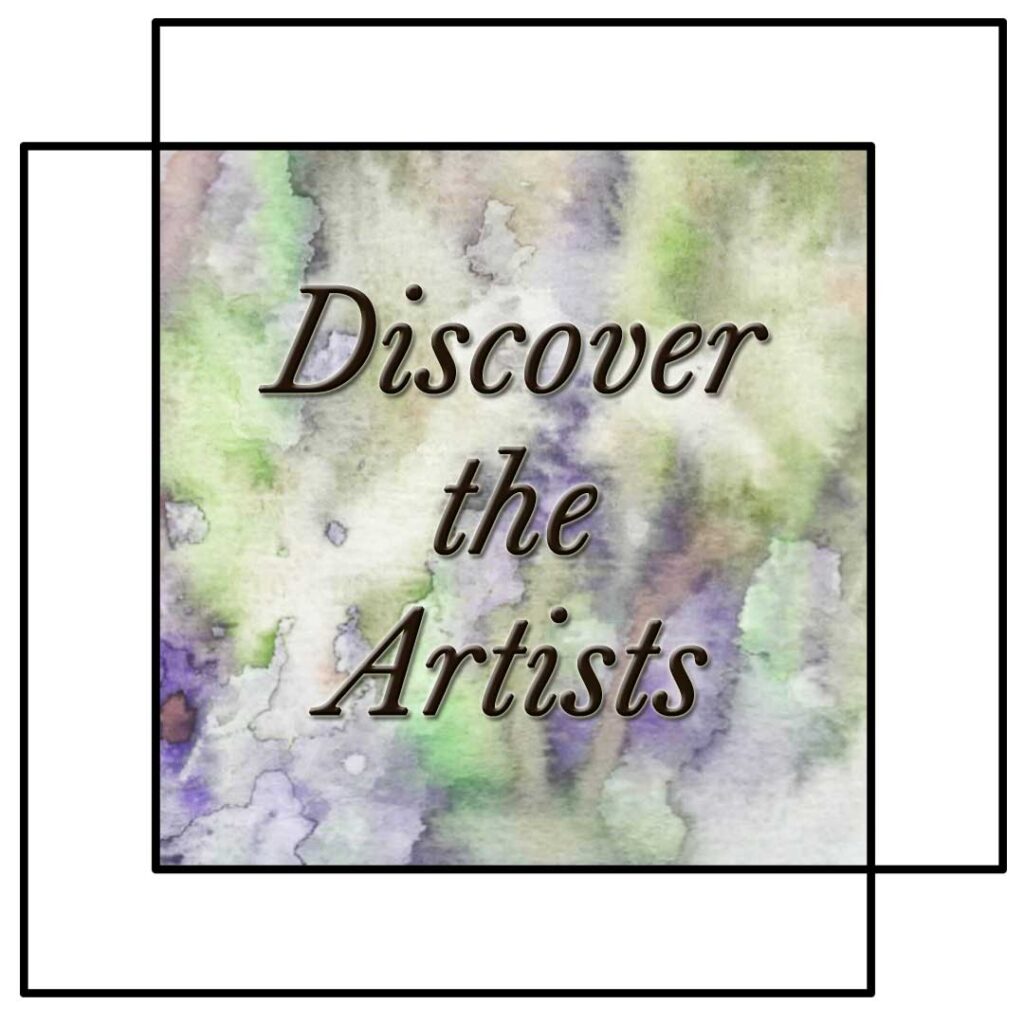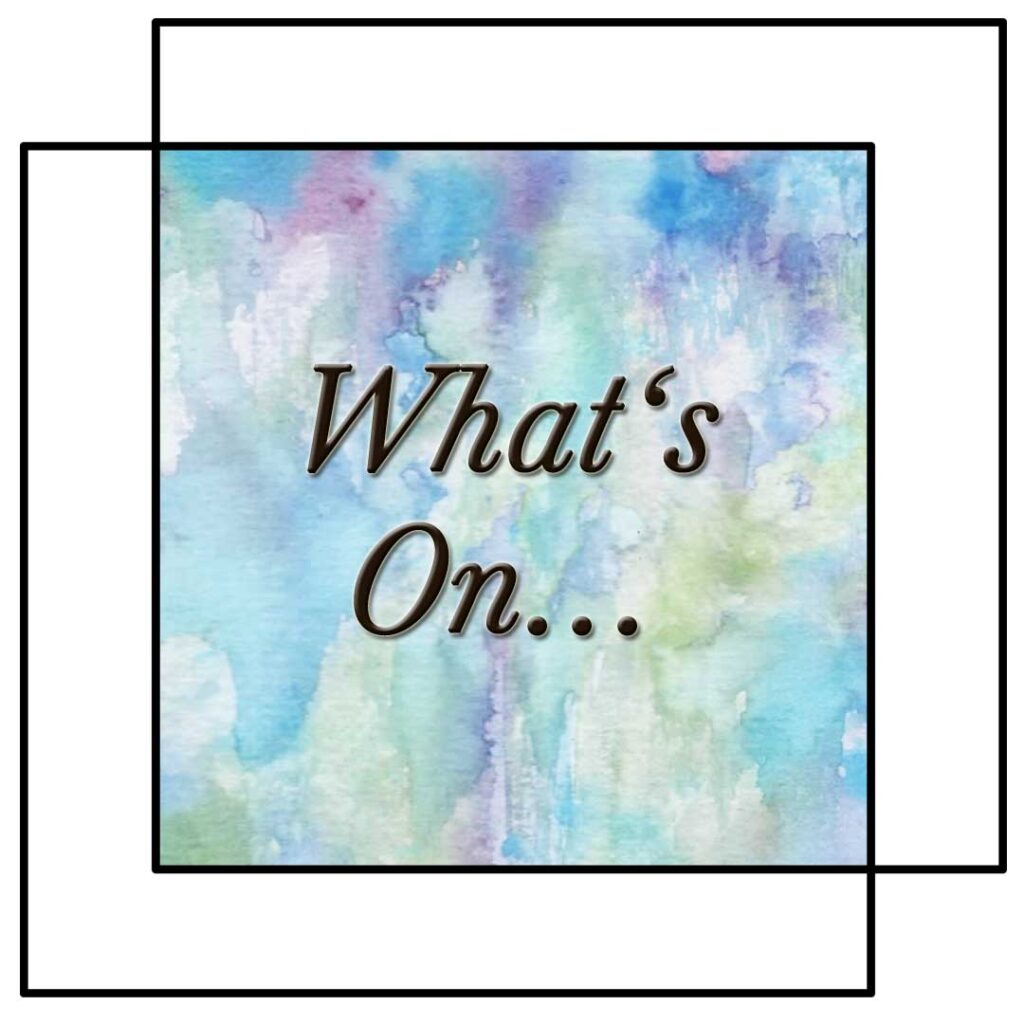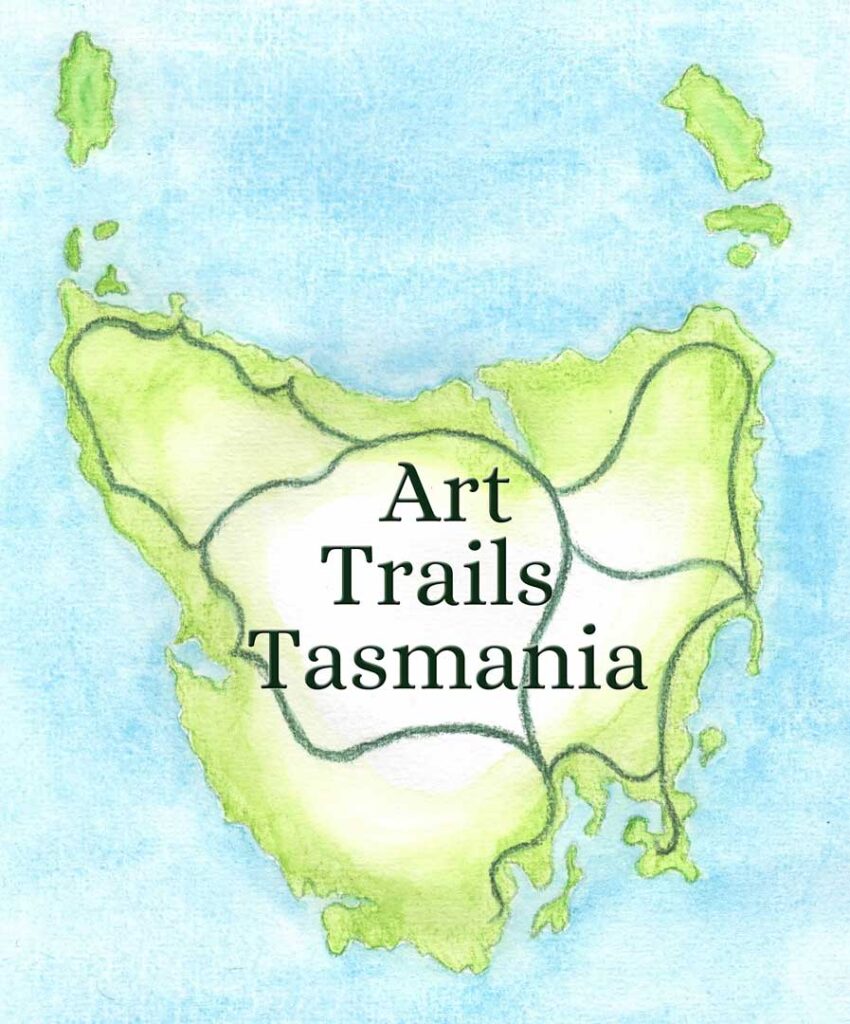How to Make Art Exhibitions Enjoyable, Profitable and Vibrant
Creating successful art exhibitions means more than just hanging work on a wall. And when done well, all involve benefit creatively, financially and professionally.
As with all things in life it is much easier to do things well when you know how. So this two part series is focused on shining a light on the sharing the skills, actions and processes needed to make your art exhibitions successful.
This first part is about how to create an engaging, creative and profitable event while the second part is all about the crucial marketing and promoting that is needed to get art lovers and buyers to your exhibitions.
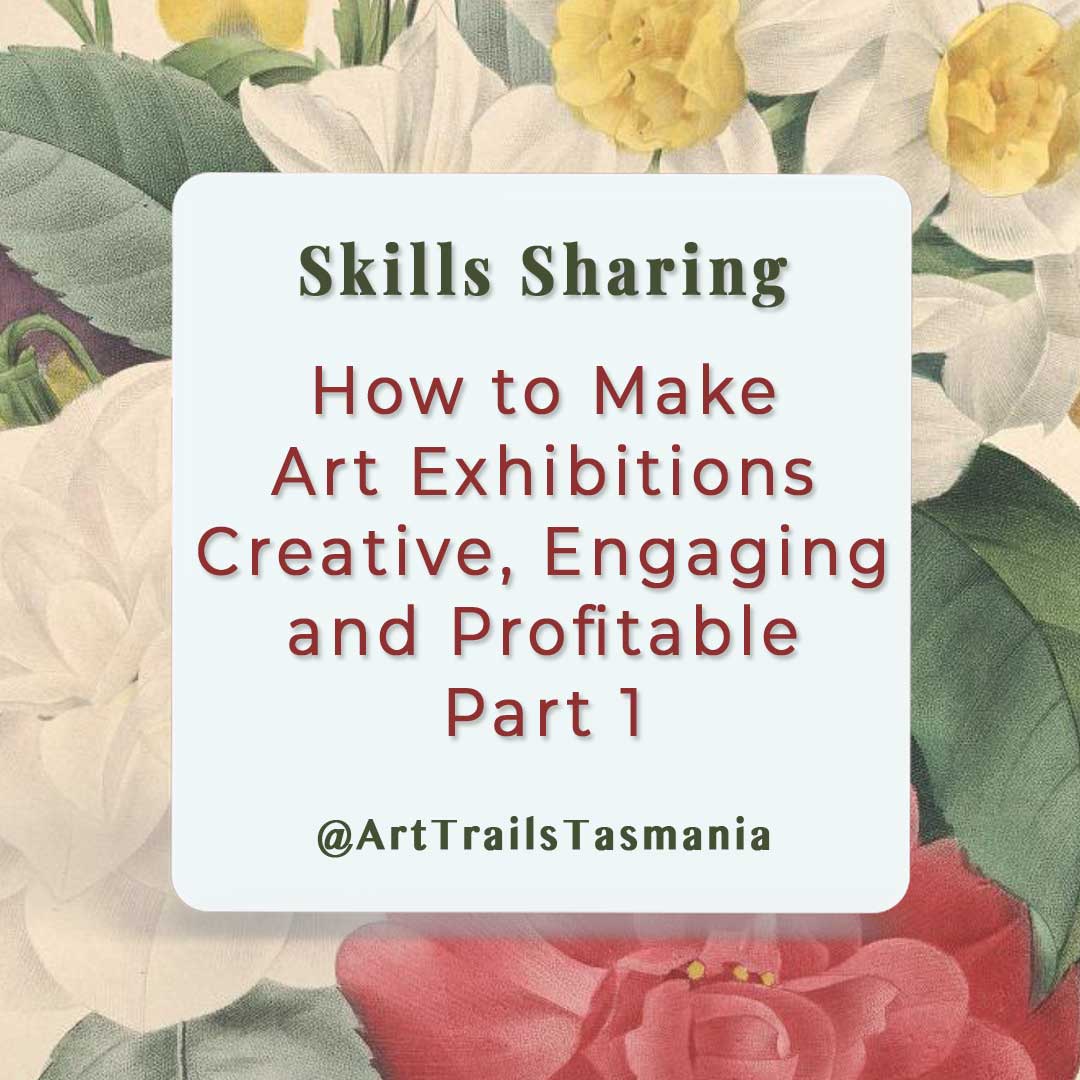
The Value of Making Art Exhibitions Engaging and Meaningful
A creative and engaging experience helps build a real connection with your audience. People remember exhibitions that offer something unique—whether that’s an imaginative display, a beautiful setting, or a sense of story behind the artwork.
Including artist talks in your art exhibition allows visitors to hear directly from the creators. These talks add depth, meaning and a personal touch to the experience. Audiences love to learn what inspired the work and enjoy meeting the artists behind the scenes. This builds trust, loyalty, and often leads to sales.
Art Exhibitions with Workshops
Running workshops during or after your art exhibition also increases engagement. Visitors get hands-on, learn new skills, and gain a stronger connection to your work. Workshops offer an extra income stream and attract a wider audience, including families and beginners.
To make your art exhibition financially successful, offer a range of artwork and products. Include originals, limited edition prints, cards, and handmade items at various price points. This allows more people to support your work, regardless of budget.
Well Planned Art Exhibitions Flourish
A well-planned art exhibition that is creative, engaging and includes artist talks and workshops can boost your reputation. It helps you grow your following, sell more work, and develop valuable relationships with collectors, supporters, and the wider community.
Whether you’re a solo artist, gallery, or group, making your art exhibition both inspiring and profitable ensures your events are not only memorable but also sustainable for the future.
Why Creative, Engaging and Profitable Art Exhibitions Matter
A well-curated art exhibition is a chance to present your work with intention, drawing attention to your skills, style and creative message.
For artists, galleries, and art societies, a successful art exhibition increases visibility and brings your work to a wider, more appreciative audience. It can attract precious new members, newsletter subscribers and online followers.
Connecting More Deeply
Visitors connect more deeply with artwork when it is thoughtfully displayed and supported by a clear, engaging theme or narrative. This emotional connection is vital for calling art lovers to buy your work.
An art exhibition allows you to create a space where your work can speak directly to the viewer without distraction.
This is a very different environment to being online with the noise of Instagram and platforms like Bluethumb, Redbubble, Etsy, Patreon and Spoonflower where your audience is easily distracted.
Planned Art Exhibitions Get More Coverage
Carefully planned exhibitions attract press coverage, social media interest, and word-of-mouth recommendations from attendees and fellow creatives.
A strong art exhibition also helps you build meaningful connections with buyers, supporters, and potential collaborators within the creative community.
It will open doors for you, some expected or hoped for, others unexpected but most welcomed.
By offering high-quality, accessible experiences, you encourage repeat visits and support from a loyal, diverse audience.
This is the sort of audience that you want to nurture and become solid supporters of you and your work.
Art Exhibitions Provide Various Income Opportunities
Art exhibitions provide a professional platform to sell original pieces, prints, and other work, helping you generate valuable income.
So think through the various price points and budgets that you want to look after.
Many emerging art buyers will start with purchasing a print and aspire to buying original works of favourite artists, even saving for this very special acquisition.
Participating in or organising an art exhibition shows commitment to your practice and encourages future opportunities and commissions. It sends a loud and constructive message to others in your art community.
The Power of Group Art Exhibitions
Group art exhibitions offer a supportive space to learn, grow, and share ideas with other artists, curators, and visitors.
You benefit from the followers of the other exhibiting artists attending and discovering your work in the process.
Every art exhibition is a step forward—an opportunity to reflect, showcase progress, and invite new conversations around your work.
A successful art exhibition combines creativity, clear presentation, and a welcoming atmosphere—making your event both enjoyable and rewarding.
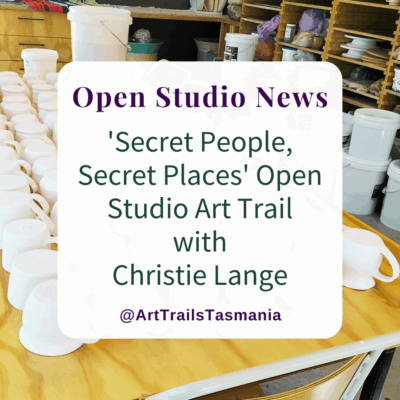
“Secret People, Secret Places” Open Studio Art Trails with Christie Lange
Discover ceramic artist Christie Lange’s open studio during “Secret People, Secret Places” at the Bay of Fires Winter Arts Festival at Binalong Bay & explore the creative process.
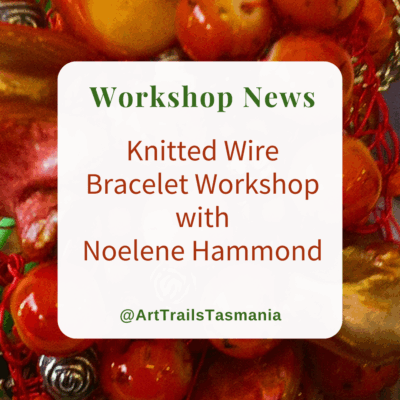
Knitted Wire Bracelet Workshop with Noelene Hammond
Learn how to create your own knitted bracelet in this workshop with Noelene Hammond and enjoy a delightful gathering focused on creativity.
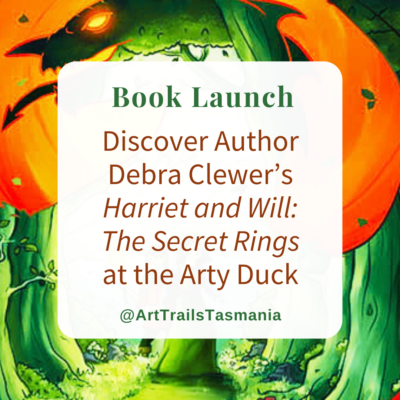
Discover Author Debra Clewer’s Harriet and Will: The Secret Rings
Join Debra Clewer at the Arty Duck for the book launch of “Will & Harriet” a time-slip adventure filled with history mystery fun activities & puppet magic!
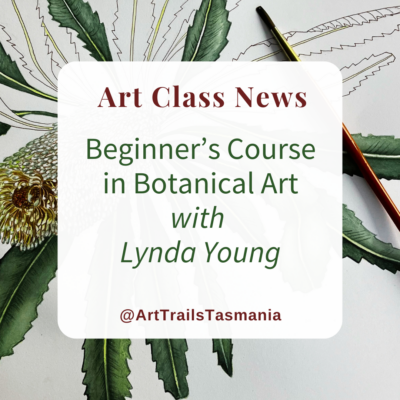
Beginner’s Course in Botanical Art with Lynda Young
Be sure to be part of this free botanical art 6 week UA3 course with Lynda Young so you can capture the joys of nature.
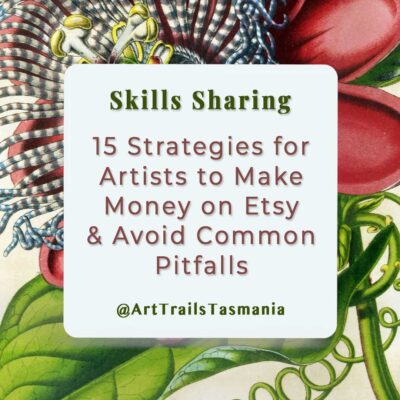
15 Strategies for Artists to Make Money on Etsy and Avoid Common Pitfalls
Discover 15 strategies to boost your income on Etsy, perfect for artists aiming to thrive in the online marketplace & monetise their work.
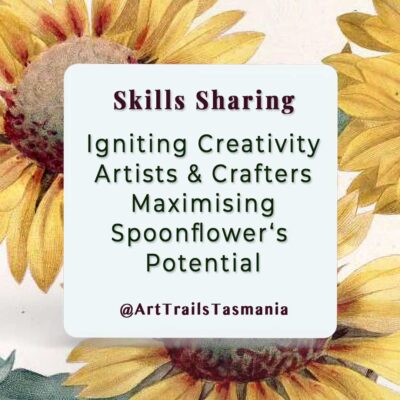
Igniting Creativity Artists and Crafters Maximising Spoonflower’s Potential
Ignite creativity with Spoonflower and Art Trails Tasmania! Discover how artists and crafters maximise Spoonflower’s potential.
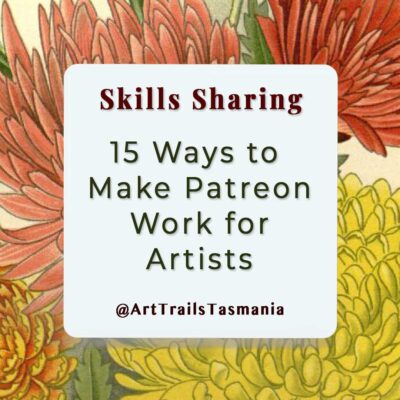
15 Ways to Make Patreon Work for Artists
Here are 15 practical tips for how to make Patreon work for artisans to create a sustainable online income by Art Trails Tasmania.
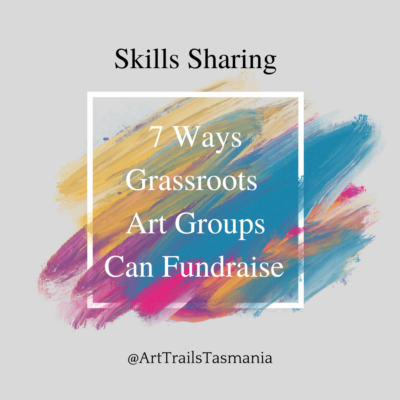
7 Ways a Grassroots Artist Group Can Fundraise
This skills sharing story is all about helping grassroots artist groups and societies fundraise for a sustainable future.
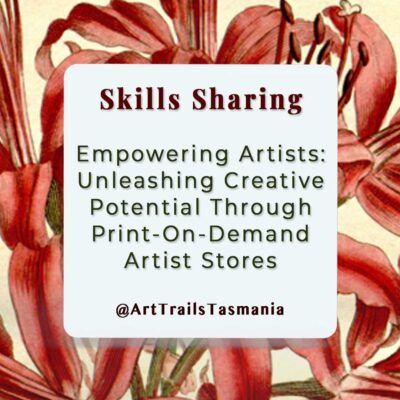
Empowering Artists: Unleashing Creative Potential Through Print On Demand Stores
Discover the boundless potential of creative expression with print-on-demand stores in our latest blog post. Explore how artists are empowered to showcase their talents and reach a global audience through these innovative platforms. Unleash your artistic vision and transform it into reality today!
Creative Presentation and Curation Tips for Art Exhibitions
Well-curated art exhibitions invite visitors to explore, pause, and connect with the artwork on display in a meaningful and memorable way.
Careful layout planning ensures your art exhibition flows naturally, guiding people through the space without confusion or overcrowding.
Lighting is Vital for Art Exhibitions
Use lighting to highlight key pieces, create atmosphere, and bring out details, colours, and textures in your artwork. Be sure to consider the impact of reflections in the protective glass coming from windows.
Consider the visitor’s journey; ensure each section of your art exhibition feels connected, engaging, and easy to navigate. This can be achieved by visual clues from the works themselves, signage and displays.
Telling a Story and your Art Exhibitions
Group artworks thoughtfully to support a theme, tell a story, or reveal an evolving creative process.
Placing similar styles, colours, or subjects together helps visitors absorb each piece while seeing the links between them.
Contrast can also be effective: juxtaposing different works can spark new interpretations and draw attention to unique details.
Incorporate display materials, such as easels, plinths, or frames, to give each piece presence and a clear place within the exhibition. These can be also used to direct the flow of visitors through the space.
Color and Props
Use colour and texture in your curation to create visual rhythm and keep the art exhibition experience dynamic and inspiring.
Props or simple decorative elements can enhance storytelling and make the art exhibition space more inviting and immersive. These can include creative tools used in your process, still life vinaigrettes, it is all about connection and telling a story.
Labelling is Vital
Keep labelling clear and consistent, offering useful information without overwhelming the viewer.
An engaging art exhibition balances creativity with clarity, making it enjoyable for new audiences and seasoned collectors alike.
Investing time in presentation and flow helps your art exhibition stand out and encourages people to stay, share, and return.
Adding Interactive and Engaging Elements to Your Art Exhibition
An interactive art exhibition creates a richer experience, encouraging visitors to connect with the artwork, the artist, and the creative process.
Plus, each event element gives you more interesting and engaging newsletter, social media and mainstream media stories for your audience, both new and established.
Artist Talks and Discussions
Hosting artist talks allows you to share the inspiration behind your work, offering personal insight and encouraging conversation.
Q&A sessions invite visitors to ask questions and explore ideas, making your art exhibition feel welcoming and inclusive.
Live demonstrations showcase techniques and materials, giving audiences a chance to see the creative process unfold in real time.
Remember to keep this sort of activity simple enough for you to do comfortably in a short time frame while also being able to talk with your engaged audience.
These activities help demystify art-making and make your art exhibition more memorable and meaningful for all ages.
Art Exhibitions with Interactive Elements
Interactive elements such as feedback walls encourage visitors to share their thoughts and feel part of the event. This can be very effectively done with some coloured post-it notes, a pot of pens and a wall for them to be stuck to.
Sketching areas with basic materials allow guests to respond creatively and spend more time in the art exhibition. This is can be a lot of fun and is a lasting memory for your visitors. Again, it simply done by providing a couple of pots with pencils and some paper on a table with some stools or chairs. It doesn’t need to take up much space at all for it to be powerfully effective.
These thoughtful additions can inspire budding artists and create moments of quiet reflection within the space.
Behind-the-Scenes Insights
Behind-the-scenes content adds depth—consider printed guides, labels, or short videos that reveal how pieces were developed.
This extra layer of storytelling makes your art exhibition more engaging and helps visitors connect emotionally with the work.
Displaying preparatory sketches or studio photos can spark curiosity and show the hard work behind finished pieces.
Interactive and educational features help create an art exhibition that feels alive, welcoming, and relevant to today’s audiences.
And remember, you can take your pick of which of these elements to include in your art exhibitions.
Valuable Word of Mouth Promotions
By offering varied ways to engage, your art exhibition becomes more than a display.
It becomes an experience visitors want to remember and revisit and share on their own Instagram, Facebook etc profiles. This social word of mouth process is so powerful for artists, galleries and societies.
Adding Value with Workshops and Events at Art Exhibitions
Running creative workshops as part of your art exhibition adds value, attracts wider audiences, and creates meaningful engagement with your work. Plus provides excellent content for promoting your exhibitions.
Workshops allow visitors to take part in the creative process, deepening their appreciation of the techniques and materials used in the art exhibition.
Hosting sessions during or after your art exhibition encourages return visits and extends the impact of the event beyond opening hours.
Think of Your Workshop Audiences
Offer a range of workshops to suit different skill levels, from complete beginners to those with more experience.
Tailor sessions for adults, families, or school groups to ensure your art exhibition is accessible and inclusive for all ages. You don’t need to cater for every audience but it is helpful to think through who the various audiences are and who you want to actively engage with.
Types of Workshops at Art Exhibitions
Practical, hands-on activities encourage learning, creativity, and interaction, making the art exhibition more dynamic and memorable.
Workshops can cover drawing, painting, printmaking, sculpture, or crafts—whatever reflects your exhibition and your creative practice.
Consider also preparatory activities involved in the lead up to your studio work as this can be an ideal exhibition workshop.
Looking After Your Income Stream
Charging a reasonable fee helps cover materials and provides a valuable income stream during your art exhibition.
If you don’t want to charge participants a fee then consider applying for local grants or sponsorship.
Do make sure you honour the support offered by others and clearly acknowledge them, sadly many are willing to take the empowering money and not properly acknowledge those who are backing them which is always disappointing.
Fortunately saying thank you and giving generous recognition to sponsors and grant givers is delightfully easy and it’s appreciated.
Consider Where There Are New Audiences
Group bookings, community partnerships, collaborations, or school visits can also help build your audience and attract new supporters.
You could collaborate with another artist or art group with joint or combined workshops. This has the added benefit of your exhibition is promoted to their audience, just as their work is promoted to your audience.
Use workshop time to introduce your work, answer questions, and share insights that support the art exhibition theme.
Loyal New Supporters
Participants often become loyal followers and may return to future exhibitions, bringing friends and family with them. So make sure that they can easily follow you on the socials and join your newsletter.
Creative events enrich the experience and strengthen your connection with the people who engage with your art exhibition.
By offering workshops, you transform your art exhibition into a place of inspiration, learning, and lasting connection.
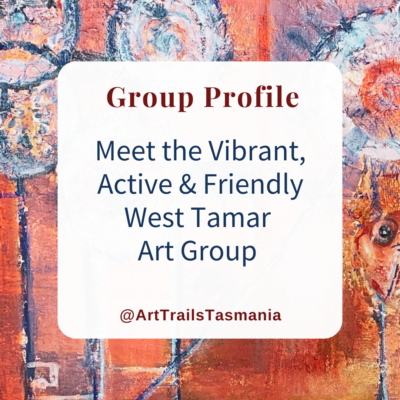
Meet the Vibrant, Active and Friendly West Tamar Art Group
Come meet the West Tamar Art Group, a vibrant community where artists & makers connect, create, & showcase their work in Tasmania’s stunning West Tamar region.
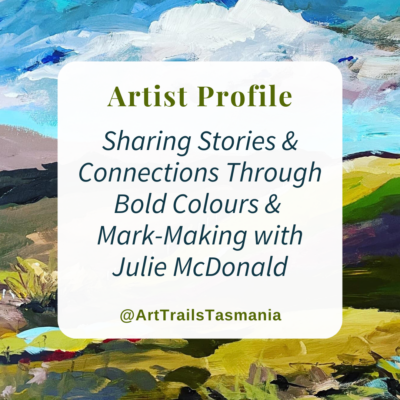
Bold Colours and Mark-Making with Julie McDonald
Thriving with bold colours, mark-making, creatively challenging herself artist Julie McDonald is coming into her own as she honours her muse.
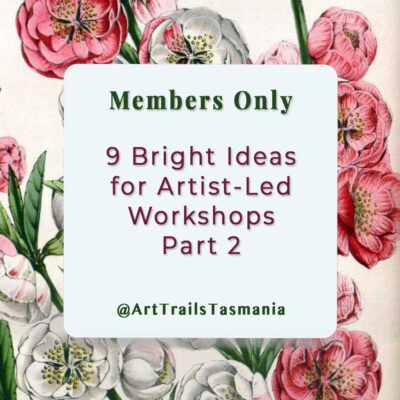
9 Bright Ideas for Artist-Led Workshops Part 2
In the second part of our series on success with workshops for artists, we have 9 great ideas to get you started on crafting your own calendar of workshops.
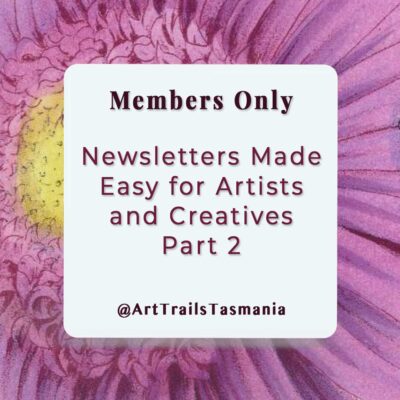
Newsletters Made Easy for Artists
Part 2 of our practical guide for newsletters for artists & creatives we share 12 content ideas, strategies & how to plan your newsletter so it works for you.
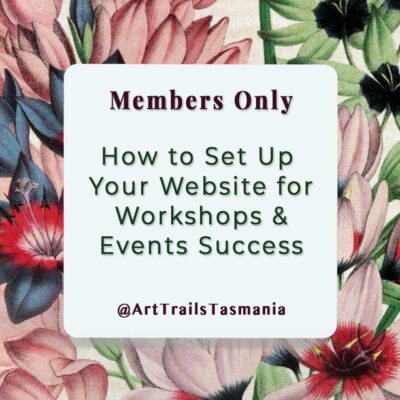
How to Set Up Your Website for Workshops and Events Success
How to setup your arts & crafts website so you can get more bookings for your workshops, events, courses & classes in this Members Only Art Trails Tasmania story.
Making Your Art Exhibitions Financially Sustainable
Well-planned art exhibitions can be both creatively rewarding and financially sustainable when you offer a variety of work at different price points.
Include originals, limited edition prints, greetings cards, and handmade crafts to appeal to a wide range of visitors and budgets.
Affordable items allow guests to support your art exhibition even if they can’t invest in larger pieces.
Themed merchandise, such as bookmarks, mugs, or tote bags, inspired by your artwork can be both practical and profitable.
Selling smaller items alongside your main work helps increase overall sales and gives visitors more ways to take something home.
Offer bundle deals to encourage multiple purchases—for example, a print and card set at a discounted price during the art exhibition.
Think through a plan for what you could do with any remaining merchandise that may be left after the exhibition.
Many of us grass roots artists are already selling our works at markets and fairs, the Tasmanian Craft Fair, at workshops and classes that we run and our online website store.
Commissions
Commission options give buyers the chance to request bespoke pieces, adding a personal touch while generating additional income.
Be sure to set your boundaries with commissions and have the details about obligations, rights and responsibilities agreed to.
Many artist take either full or 60+% payment up front with a set date for delivery of the work and any final payments.
Clear Signage About Prices is Always Important
Clear pricing and visible signage throughout the art exhibition make it easy for visitors to browse and buy with confidence.
Ensure payment is simple by providing card readers and offering secure online payment options for larger or remote sales.
Provide Receipts and Collection Terms
Providing receipts and clear collection terms helps buyers feel supported and reassured.
With thoughtful planning and a variety of offerings, your art exhibition can support your creative practice and fund future projects.
Financially sustainable exhibitions benefit everyone—inspiring your audience while helping you grow and continue sharing your work.
Building Long-Term Connections with Art Exhibitions
An art exhibition is not just about the moment—it’s a valuable opportunity to build lasting connections with your audience, online followers and supporters.
Collect visitor emails during your art exhibition using a clear, GDPR-compliant sign-up form or digital device at the entrance or sales desk.
Avoid breaking the law, never add anyone to your newsletter list without their express permission, even if you think they want to see your newsletter. Send them an email invitation to join your newsletter and a link to the dedicated webpage you have for it.
Invite people to leave feedback, either through a comment book or short survey, to learn what they enjoyed and how you can improve. You may be given some amazing insights that open new doors.
Grow from Feedback
Positive feedback helps you grow confidence, while constructive comments can guide the planning of your next art exhibition or creative project.
Following up after the art exhibition shows appreciation and keeps your work fresh in visitors’ minds. And be sure to make it easy for them to connect with your online.
Saying Thanks Really Does Matter
Send a thank-you email with highlights from the art exhibition and details about upcoming shows, workshops, art retreats, or new work.
A simple gesture of gratitude helps build trust and encourages repeat visits to future exhibitions or events.
Make Connections Happen Easily
Keep in touch through regular newsletters that share behind-the-scenes insights, progress on new pieces, or special invitations.
Encourage visitors to share their experience by tagging your art exhibition on social media and recommending it to friends.
Word-of-mouth is one of the most powerful ways to increase awareness and footfall for your next art exhibition.
Offer incentives, like discounts or previews, to those who return or bring someone new to your events.
Strong, supportive connections can turn first-time visitors into long-term followers and collectors of your work.
By nurturing relationships, your art exhibition becomes the start of an ongoing creative journey with your audience.
Enjoy Running Your Successful Art Exhibitions
A thoughtful, creative, and well-promoted art exhibition has the potential to be both personally fulfilling and financially rewarding for artists, groups, and galleries.
An art exhibition allows you to share your vision, connect with others, and create a space where your work can truly shine.
When you plan carefully, promote effectively, and present with care, your art exhibition will leave a lasting impression on every visitor.
The promotion is vital and that’s what we delve into in Part 2 of this series on how to make art exhibitions successful.
Grow with Art Exhibitions
Each art exhibition is a valuable learning experience, take time to reflect on what worked well and where improvements can be made. Be certain to capture these lessons in a journal so you can easily refer to them again.
Don’t be afraid to experiment with new formats, themes, or interactive elements to keep your art exhibition fresh and engaging.
Creative risk-taking often leads to new opportunities, stronger connections, and a more memorable art exhibition experience for visitors.
Encourage feedback from your audience and use it to shape future exhibitions, workshops, and events that reflect your growth.
Consistent communication with your audience helps build loyalty and increases the chances of repeat visits and continued support.
Invite previous visitors to return by offering previews, updates, or exclusive invitations to your next art exhibition or event.
Word-of-mouth sharing is incredibly valuable—give people something worth talking about and make it easy for them to spread the word.
Celebrate your achievements, no matter the scale, and keep moving forward with confidence, creativity, and purpose.
With each art exhibition, you build momentum, expand your audience, and strengthen your presence in the creative community.
The journey is ongoing, keep exploring, sharing, and improving with every exhibition you create.
Next Steps
Now, dive into Part 2 in this very practical series on running successful art exhibitions as we go through the all important ways to promote your inspiring events!
No Results Found
The page you requested could not be found. Try refining your search, or use the navigation above to locate the post.
Read the Latest How To Blog Stories
9 Bright Ideas for Artist-Led Workshops Part 2
Getting Started with 9 Ideas for Your Workshops In this second part of our series on workshops, we explore creative ways for you to grow both artistically and financially. Running workshops can be a fulfilling and sustainable source of income, while allowing you to...
Unlocking Creative Earning Potential of Artist Led Workshops – Part 1
Workshops: A Source of Inspiration and a Healthy Income Workshops are an incredible way for artists to expand their creative horizons and connect with others in meaningful ways and earn a important income from their creative talents. This is Part 1 of a series on...
Newsletters Made Easy for Artists
Crafting Compelling Newsletters for Artists & Creative Groups Newsletters are a vital tool for individual artists and creative organisations, offering a direct way to engage with your audience and build lasting relationships. However, planning out the content for...
How to Plan Successful Arts and Crafts Events
Planning and Creating Profitable Events Arts and crafts events are essential for engaging art lovers, buyers, and followers, and making them successful requires thoughtful planning and promotion. This skills story is Part 1 of a two-part series designed to guide...
How to Set Up Your Website for Workshops and Events Success
Thriving with Workshops and Events Successfully running workshops, events, classes and online courses can be an ideal way for artists and makers to create prosperous income channels. This can be the difference between surviving and thriving. Having a stall at markets,...
How Artists Can Build Their Digital Eco-System for Branding Success
7 Ways to Grow Your Digital Eco-System with Effective Branding A cohesive digital eco-system and branding approach essential for artists, makers, creative business owners, and art groups to establish a recognisable presence across multiple platforms. Here are seven...
Read the Latest Blog Stories and Flourish…
Discover Author Debra Clewer’s Harriet and Will: The Secret Rings
You're Invited to the Book Launch of "Harriet and Will: The Secret Rings" Smithton author Debra Williams (writing under the pen name Debra Clewer) is launching her Middle-Grade historical fiction/fantasy children’s novel, "Will and Harriet: The Secret Rings". When:...
How to Make the Most of Entering Exhibitions Like the Incognito Art Show
Making the Most of Exhibiting in Events Like the Incognito Art Show The Sydney-based Incognito Art Show is now Australia's largest annual art show. It is open to any artists intersted in taking part. It is an event where artists anonymously donate postcard-sized...
15 Ways to Reignite Your Creative Practice and Thrive Part 2
15 Practical and Exciting Ways to Find Your Path Back to Creativity Welcome back to Part 2 of our series on Finding Your Path to Creativity with your own creative practice! Whether you’re returning to a long-loved creative practice or seeking fresh inspiration, the...
7 Books for Creative Growth Book Review
Book Reviews for Art Lovers It is book review time with these inspiring books that are all about sharing inspiration, skills and leading you along creative paths of growth. Dive into Mastering the Art of Fabric Printing and Design by Laurie Wisbrun, The Wildlife...
Meet the Vibrant, Active and Friendly West Tamar Art Group
West Tamar Art Group: Making Art Amongst the Vineyard The West Tamar Art Group is a friendly and inclusive community that brings together artists, makers, and art lovers from across the stunning West Tamar region. Founded in 2013, the group was created to provide...
Reignite Your Creative Practice and Find Artistic Fulfilment Part 1
Finding Your Path Back to Creativity Finding your path back to your creativity, to your creative practice may seem daunting but can bring immense personal joy and satisfaction. Many members talk about in their Artist Profile story how they have the experience of...
Beginner’s Course in Botanical Art with Lynda Young
Learn and Grow with Botanical Artist Lynda Young The talented Lynda Young is sharing her abundant skills and insights in her latest free UA3 Botanical Art for Beginners Class. Starting Wednesday 12th February 10am-12 at Beaconsfield Community house in Grubb St. It is...
Explore the Launceston Art Society’s BELONGING Exhibition
You're Invited to attend the Launceston Art Society's BELONGING Exhibition The Launceston Art Society presents BELONGING, an exhibition exploring the deep connections we form with people, places, and purpose. Featuring diverse artistic interpretations of belonging,...
Workshop Calendar with the Launceston Art Society
The Latest Calendar of Workshops with the LAS The Launceston Art Society is delighted to share with you an inspiring workshop calendar. From acrylics to watercolour to coloured pencils, these workshops are all about developing your skills, whether they're new ones or...
Read What Our Members Say About Belonging
Join the growing, supportive artists community today and have your Artist story told here.
Belinda is doing a great job creating a professional looking artist hub online. Check out the profile I posted recently to see how well she does them. To all my artist friends let’s help make this THE go to place to discover local artists.
You won’t regret joining Art Trails Tasmania . It’s a welcoming community for creatives at any career stage.Becoming an Art Trails Tasmania member wasn’t a hard decision for me to make as it’s such a wealth of knowledge and support.Being member provides a quality way to showcase your creative endeavours and it’s quickly growing in reach.
We operate a home based picture framing business and recently joined Art Trails Tasmania as a means to giving us exposure to the wider artist community. We have almost immediately seen increase in activity thru our online sites, which I am certain will lead to more opportunities to grow our business.

